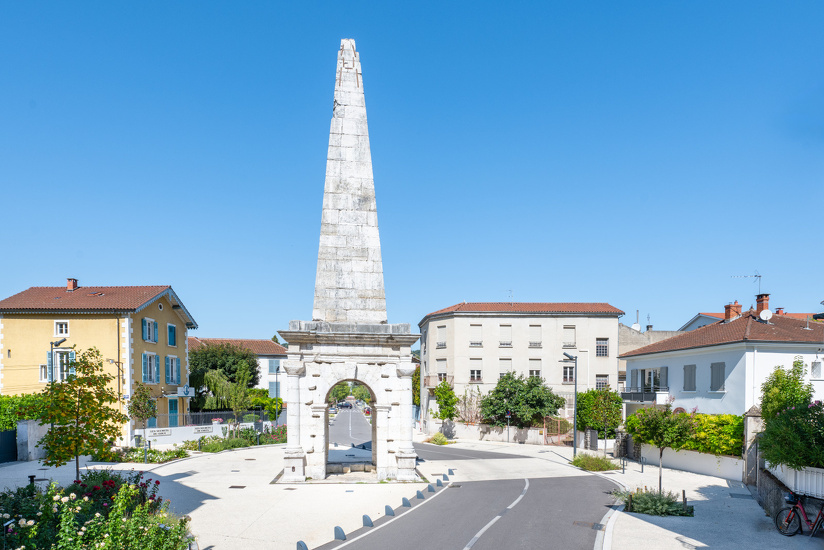The Pyramid

Today the monument is a landmark in Vienne. The site of the Roman circus, where chariot races were held in Antiquity, has been preserved through the centuries.
Description
In the 2nd century, the urban planners building the Roman circus (around 460 m long) found the space they needed on the plain that had been partly built over with large-scale embankments along the River Rhone early in the previous century.
The Pyramid stood in the middle of a central platform, called the spina (thorn) in Latin, which was raised in the circus arena. The spina was slightly higher than the track. It was decorated with small aediculae, basins or fountains adorned with sculptures. In the absence of an amphitheatre (none has been found to date), we might wonder if the circus also hosted gladiator fights and other spectacles of this kind.
Before the real nature of the Pyramid (or "Needle") was known, there was widespread popular speculated about the monument. The most widespread explanation saw it as a funerary monument, dedicated either to the heroic founder of Vienne, to the emperor (Augustus or Severus Alexander) or to Pontius Pilate, the governor of Judaea. According to a medieval legend, Pilate died in exile in Vienne.
Opening period
All year round, daily.
Services
- Guided tours
- Unguided individual tours
Prices
Free access.
